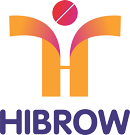Formulation vaginal tablet of Nystatin in evaluation of the in vitro antimycotic effectiveness
The objective is to formulate vaginal tablet of Nystatin and evaluate the in vitro antimycotic effectiveness against the marketed product in Candida albicans.
Nystatin is an antimycotic polyene antibiotic obtained from Streptomyces noursei. Vaginal tablet of Nystatin were formulated with 100,000 Units of Nystatin.
The tablets were made with
- Ethyl Cellulose, 4 cps as polymer
- Pregelatinized Starch (Starch 1500) as binder
- PEG 8000 as wetting agent
- Co-processed mixture of Lactose–Microcrystalline Cellulose (Cellactose) as diluent
- Stearic Acid (Stellipress 1200 Poudre) as lubricant

The optimized formulation was subjected to stability studies at accelerated condition.
Test and marketed formulations were evaluated for appearance, weight variation, thickness, hardness, friability, drug content and in vitro drug release.
In vitro studies on anti mycotic evaluation were carried out for the optimized formulation in three sets of medium cultured with Candida albicans and the zone of inhibition were compared with the marketed one.
The marketed product of Nystatin Vaginal tablet (Manufactured by Duramed Inc., USA) was characterized for Dimension, Weight, Thickness, Hardness, Disintegration Time, Dissolution, pH of Tablet Slurry and Loss on Drying.
Asystematic Drug-Excipient compatibility study was done by packing the samples in Glass vials and exposed at 55°C–2 weeks and 40°C/75% RH–4 weeks and the exposed samples were characterized for Morphological Change (Physical Observation), Assay, Related Substances, Moisture Content and FTIR Finger Printing with respect to Initial samples
This study was done foremost before taking up the prototype formulation activity. Intra-vaginal tablet of Nystatin, 100,000 units was prepared by a simple direct blending manufacturing process which provided the necessary uniform distribution of drug in the blend for tableting and comparable disintegration time and dissolution profile to that of marketed product was achieved.
Physical characteristics of the prepared vaginal tablet like Weight, Thickness, Hardness, Friability, Disintegration Time, Loss On Drying and pH of 1% Tablet Slurry were determined and were comparable to that of marketed product.
Dissolution test was conducted for both test and reference products in Apparatus-II (Paddle), 50 RPM, 900 ml, pH 4.5 Acetate Buffer, Time Points: 10, 15, 30, 45 and 60 min; and the results were comparable, based on which an In-house single point dissolution limit was fixed as NLT 35% (Q) at the end of 60 min.
The finalized Nystatin Vaginal Tablet were packed in Alu-Alu blister packs and charged for stability at accelerated condition (40°C/75%RH for 12 Weeks) and was characterized for Description, Assay, Related Substances, Loss On Drying, Disintegration Time and Dissolution.
The results were comparable with the initial values showing the stability of Nystatin in prepared vaginal tablet. Anti-mycotic effectiveness of the prepared Nystatin Vaginal tablet against the marketed product (in triplicate) was done in the cultures of Candida albicans
The prepared Nystatin Vaginal Tablet showed 94% anti-mycotic activity with respect to the marked product.


